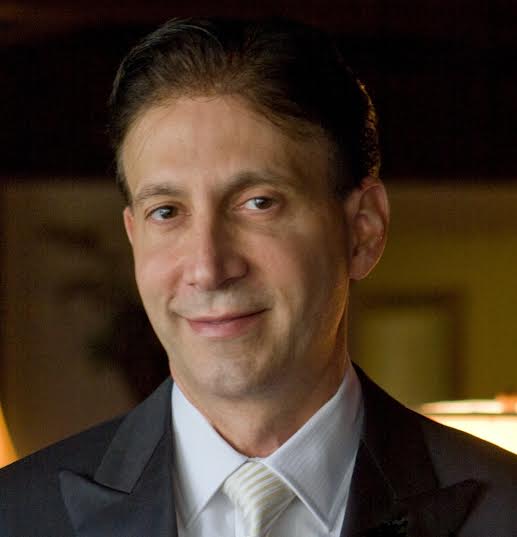In collaboration with CHIME, Becker's Hospital Review's "Life of a Healthcare CIO" series features leading hospital and health system CIOs from across the country who are sharing their experiences, best practices and challenges.
To recommend a CIO to be featured in this series, please contact Akanksha Jayanthi (ajayanthi@beckershealthcare.com) or Elizabeth Earl (eearl@beckershealthcare.com).
An interview with Frank DiSanzo, vice president and CIO of St. Peter's Healthcare System in New Brunswick, N.J.
(Note: Interview has been edited for length and clarity).
Question: You've been CIO of St. Peter's Healthcare System since 2008, but have been in the IT industry since 1983. How have you seen the industry change during your time in it?
 Frank DiSanzo: We've really gone from a transaction-based model of IT — nuts and bolts, addition and subtraction, back-office functions like billing and collections — to being thrust into clinical care. Thanks to healthcare reform healthcare IT is now all about electronic health records, HIEs, meaningful use, pay-for-performance, population health and business analytics all being managed in real-time accompanied by an ever increasing emphasis on interactions directly with the patient using mobile applications and home based medical devices. Clinicians can't lay hands on a patient anymore without interacting with an IT system. That certainly wasn't the case when I entered healthcare IT, let alone IT in general.
Frank DiSanzo: We've really gone from a transaction-based model of IT — nuts and bolts, addition and subtraction, back-office functions like billing and collections — to being thrust into clinical care. Thanks to healthcare reform healthcare IT is now all about electronic health records, HIEs, meaningful use, pay-for-performance, population health and business analytics all being managed in real-time accompanied by an ever increasing emphasis on interactions directly with the patient using mobile applications and home based medical devices. Clinicians can't lay hands on a patient anymore without interacting with an IT system. That certainly wasn't the case when I entered healthcare IT, let alone IT in general.
Q: In your time at St. Peter's Healthcare System, what has been your biggest accomplishment?
FD: The biggest accomplishment has been leading the integration of our multiple clinical systems in an effort to provide a better patient and provider experience while improving the quality of care our institution provides. On the physician and nursing side, we make available to them a world of information relative to best practices, standards of care, quality measures, etc., as well as bringing together a wide spectrum of information on the patient being treated — pulling in data from physician offices, urgent care centers, another hospital they may have visited — to help anyone putting hands on a patient at St. Peter's have a holistic view of what's going on and use that view to construct a plan of care. On the patient side we provide applications that make their healthcare information portable allowing patients to directly interact with their physician and proactively manage their care.
Q: What do you see as your biggest misstep or mistake?
FD: Our first EHR implementation took place without major participation from the clinical staff. Senior management assembled a team that we believed could adequately represent nurses, community physicians and employed physicians, and we let them make all the decisions relative to vendor selection, implementation, and so forth. We thought we could shortcut a complex process, one which would have a major impact on the institution, and that was a mistake. What we learned from our mistake is that transformational projects require transparency plus the inclusion of as many stakeholders as possible. Form committees, hold public meetings, "day in the life" exhibitions, you name it. Build a strong and varied support base and you will be laying the groundwork for the successful achievement of your goals, as well as building a group of powerful allies that will support the project through the challenges you inevitably face along the way.
Q: What is the biggest challenge you are facing right now?
FD: The biggest challenge we are facing today is the marriage of our clinical and financial data in a way that will improve patient care while providing the business intelligence the organization requires to successfully function in this era of ACOs, bundled payments and DSRIP. We have to support a care delivery model which requires us to identify and act on problems before they happen. These problems can be an avoidable readmission, an avoidable cost in the operating room or a patient that's likely to fall in their room, for example. Moreover we have to become experts in the management of a patient's care beyond the scope of our own institutions. We have to marry data from drug store chains, urgent care centers, HIEs and other provider based institutions in order to provide the best and most efficient care possible. We can only achieve this through the implementation of business intelligence and population health management systems which to date have not been utilized extensively in healthcare in the United States.
Q: What is your favorite part of the health IT industry?
FD: It's working with doctors and nurses to have a positive impact on clinical care. It's an exciting thing to be a part of.
Q: What is one lesson you've learned that you would like to share with other CIOs?
FD: Most IT projects are, in fact, not IT projects: They're clinical transformation projects in which IT plays an important but not the primary role. Be transparent, work with your clinicians and where possible let them call the shots.
More articles on CIOs:
The future of the healthcare CIO: Expanding roles, relationships and opportunities
Top 4 reasons CIOs get fired (and how to avoid them)
Few business executives see CIOs as strategic partners, report finds

